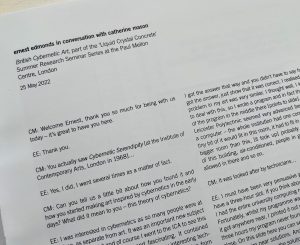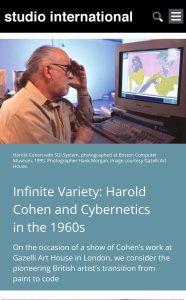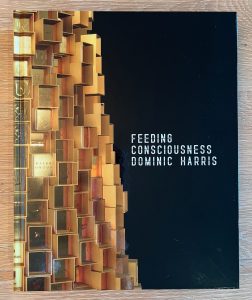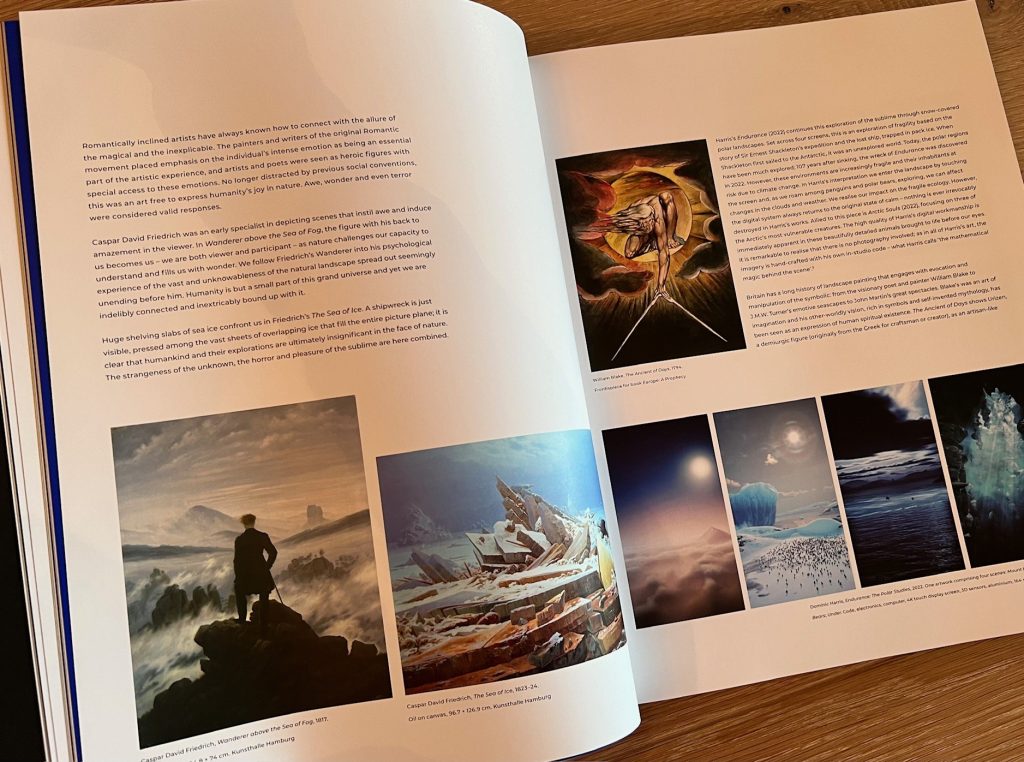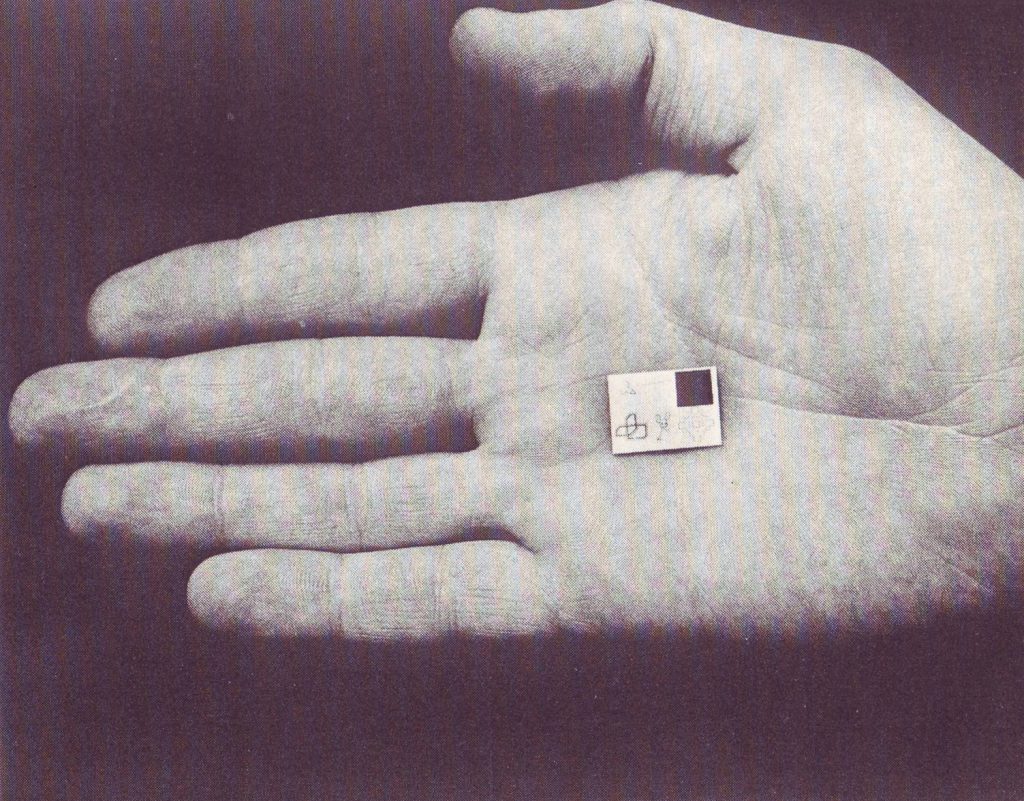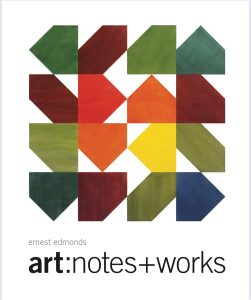Do you know how Harold Cohen transitioned from working with paint to working with code? Find out in my article just published in Studio International (CLUE – it has to do with cybernetics!)
UAL lecture out now on video
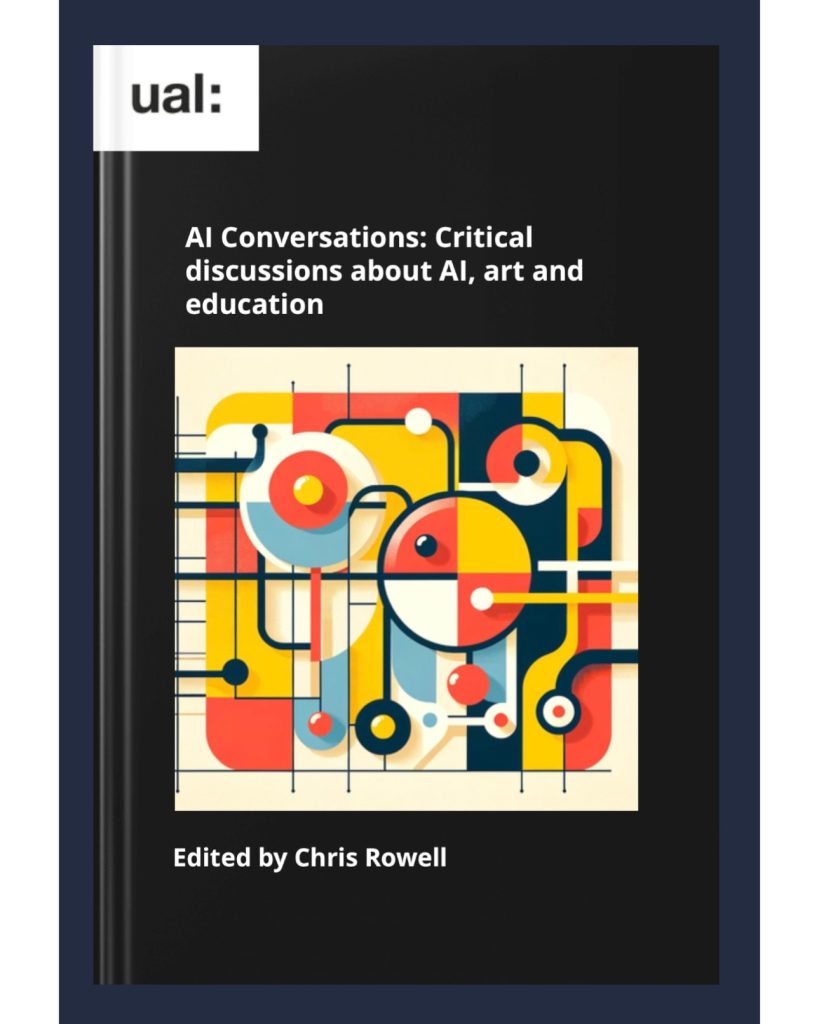
My zoom lecture about artistic use of pre-artificial intelligence systems in British art schools is now available. Listen again here. Also pleased to be a part of this ai-created book of the proceedings (shown above). This was part of the AI Practice Sharing day organised by Chris Rowell at University of the Arts London
Latest for the Tickle – featuring 1980s micro-computers
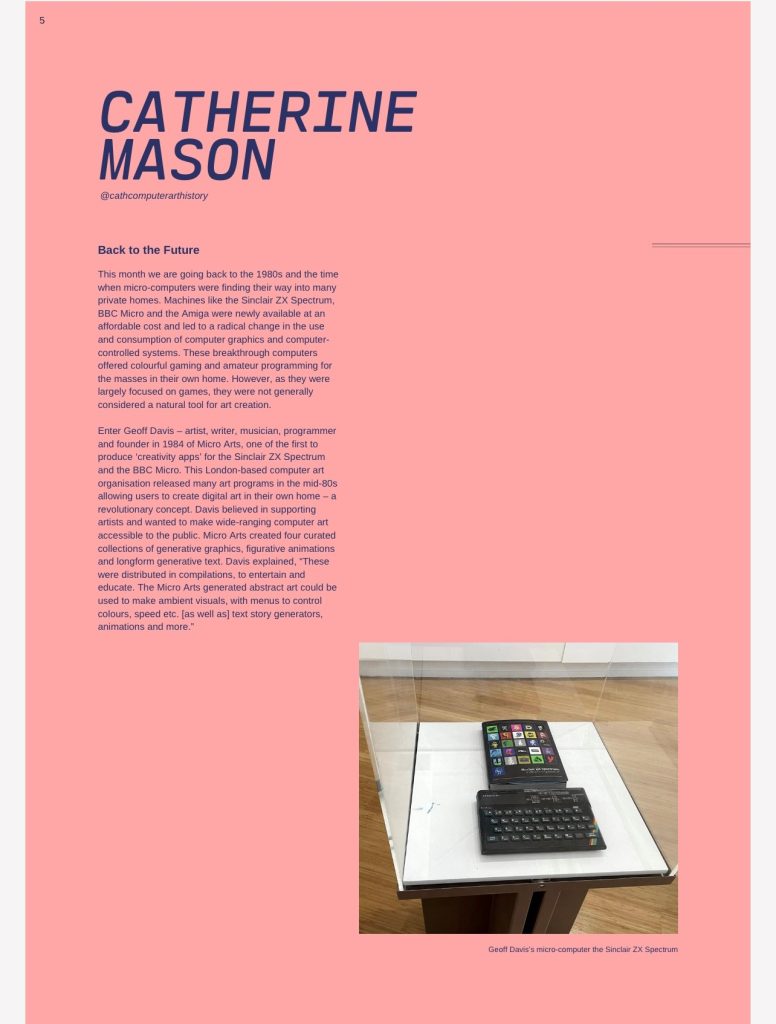
Essay published in new book about Dominic Harris by Halcyon Gallery
“As if Stirred by Magic”, my essay for the Feeding Consciousness: Dominic Harris exhibition this past summer at the Halcyon Gallery, London has just been published in a beautifully-illustrated hardback book.
Also included is a transcription of a talk in the gallery between the artist and myself.
My latest article for the Tickle – Dominic Boreham
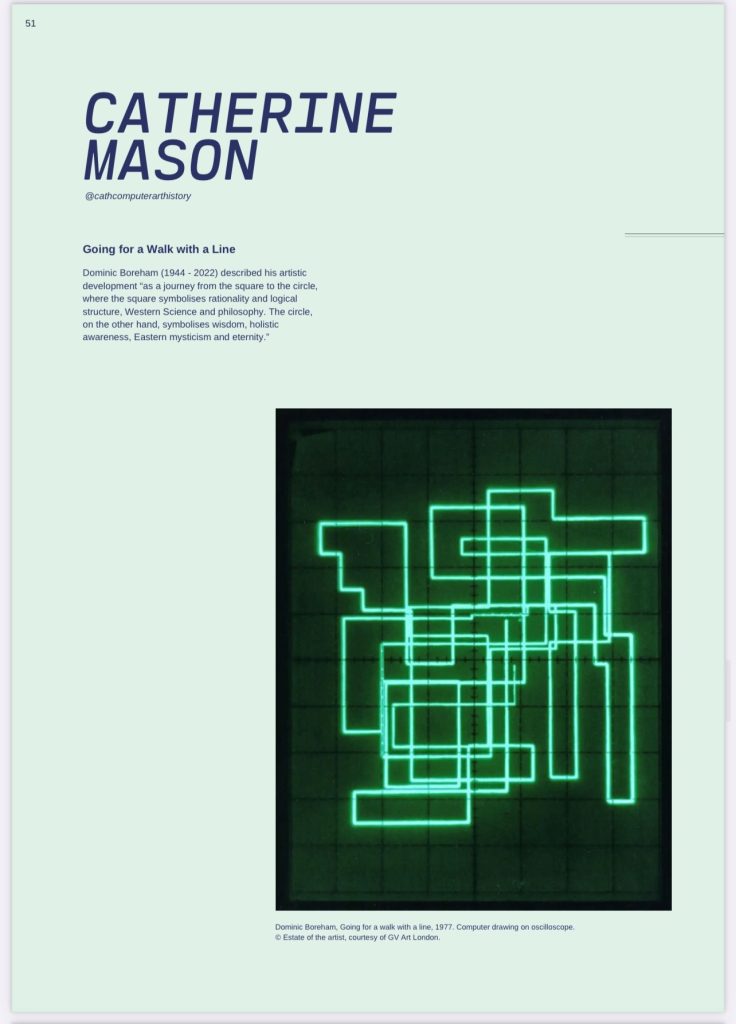
This issue features the work of Dominic Boreham and his pioneering use of the plotter. Read here
Latest article for The Tickle now published
Do you know there is a piece of computer art on the moon?
Find out in Tickle issue #85, available as an NFT on Objkt.com
Filmed interview with Dominic Harris for Studio International
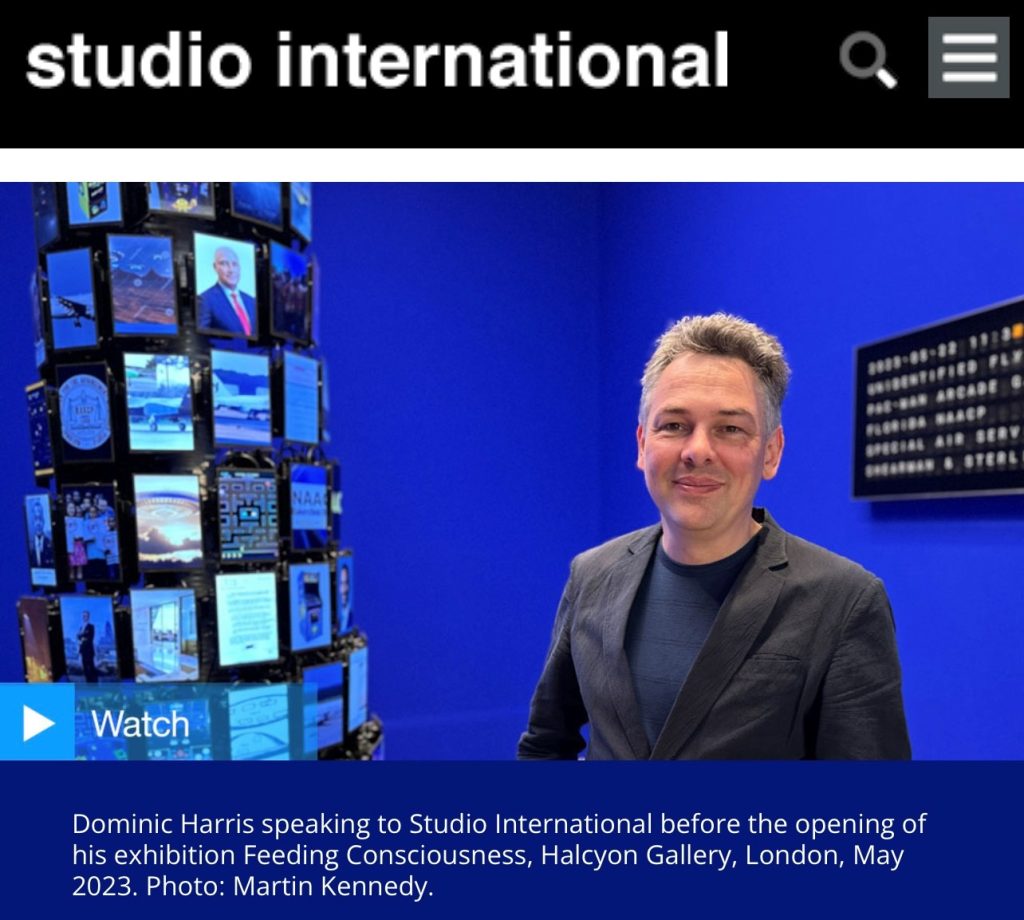
On the occasion of Dominic Harris’s exhibition at Halcyon Gallery, the artist and I toured his exhibition and discussed his practice and inspirations – click here to watch
On-line talk March 29 2023: History of AI in the Arts – the UK in the 1970s
7pm in the UK – 2pm in NYC, via Zoom
Join me for a special on-line session with 3 pioneers of computer and computational art – precursors of today’s AI & Generative Art, all of whom have a connection to the Slade School of Art and Leicester Polytechnic in the early to late 1970s.
Ernest Edmonds will describe his pioneering work with Stroud Cornock at Leicester Polytechnic, the Invention of Problems events in 1970-71, his friendship with Edward Ihnatowicz, the relationship with the Slade and the formation of the Human Computer Interface Research Unit. Stephen Bell, one of the Slade students who continued his research with Ernest, will also talk about Dominic Boreham another student who went on to the HCIRU. Paul Brown, another student at the Slade and later a Research Fellow there, will talk about his friendship with Harold Cohen and Chris Briscoe and discuss his own work with AI and A-life.
The Tickle
I am super thrilled to be joining two dynamic creators/editors – Jess Britton and Johnny Dean Mann on their digital art magazine The Tickle. I am writing a monthly column – starting with Issue No.80, about the history of this field – each month a new topic. I’m looking forward to covering some historical subjects that still have relevance in the art world today, especially with reference to technology, society and early digital art. First up is Stroud Cornock and Ernest Edmonds with a work from 1970!
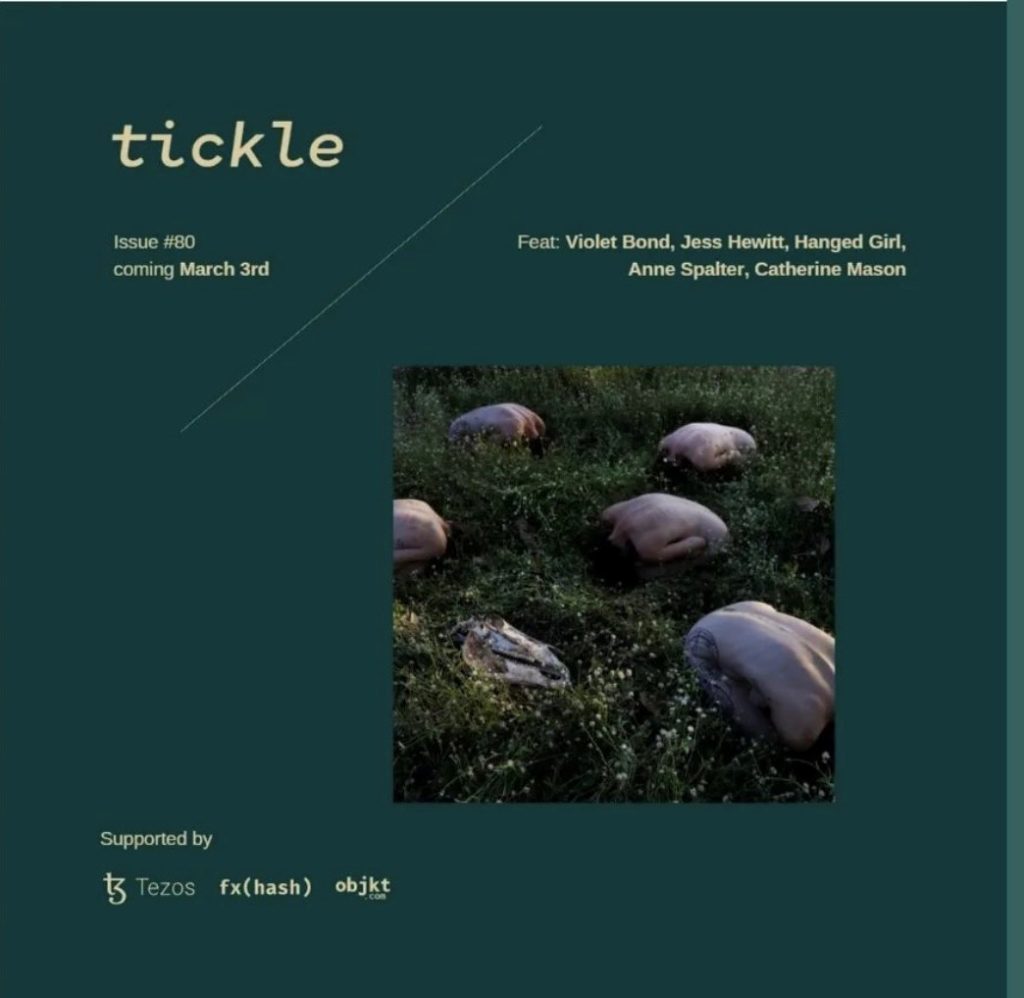
New book art:notes+works Ernest Edmonds
This beautifully-illustrated book about award winning digital and systems artist Ernest Edmonds, covers his career from 1960 to present. The Introduction includes a transcription of a ‘Conversation’ between Ernest and I that took place at the Paul Mellon Centre last year – hit the VIDEOS tab above to see a recording on YouTube of this lecture and conversation.
